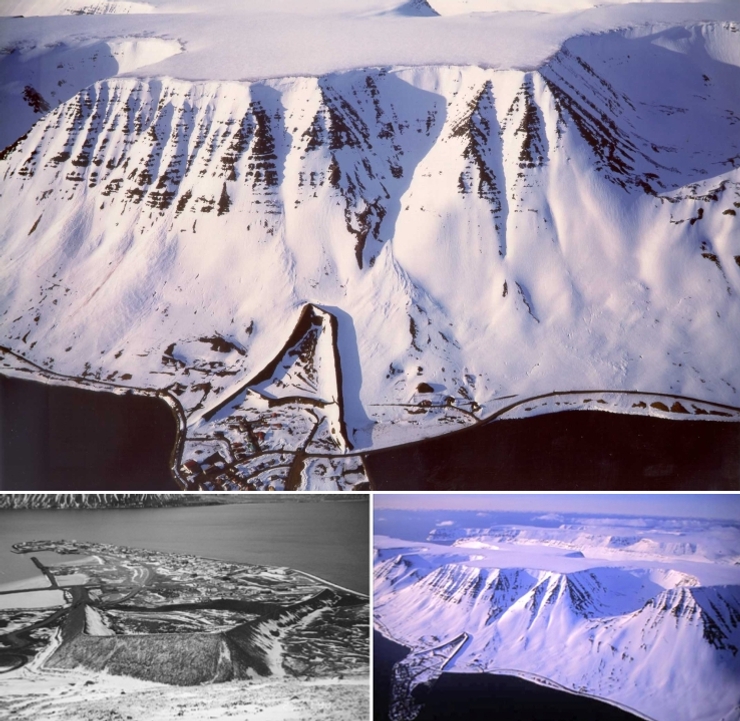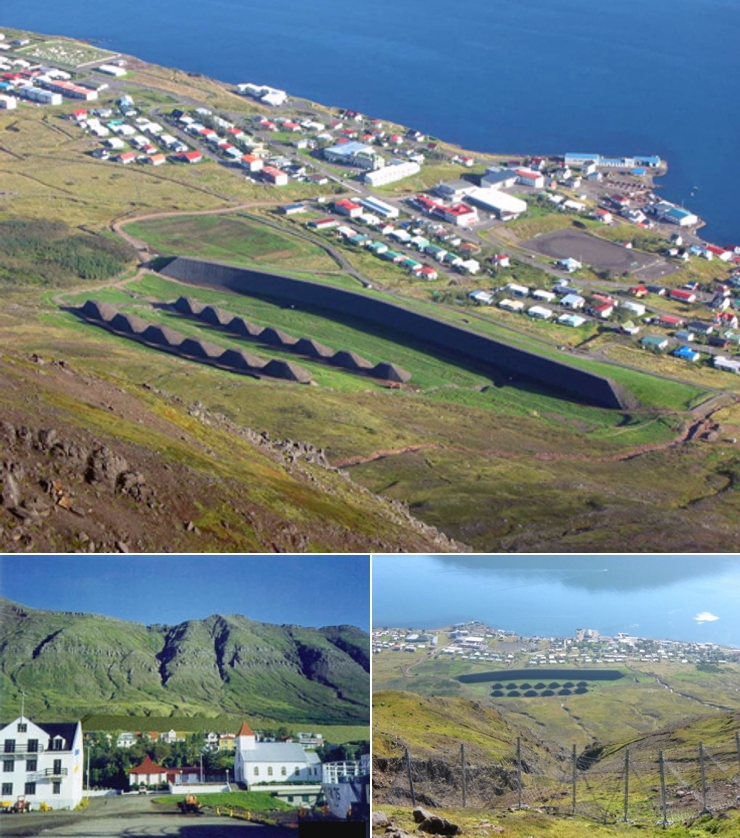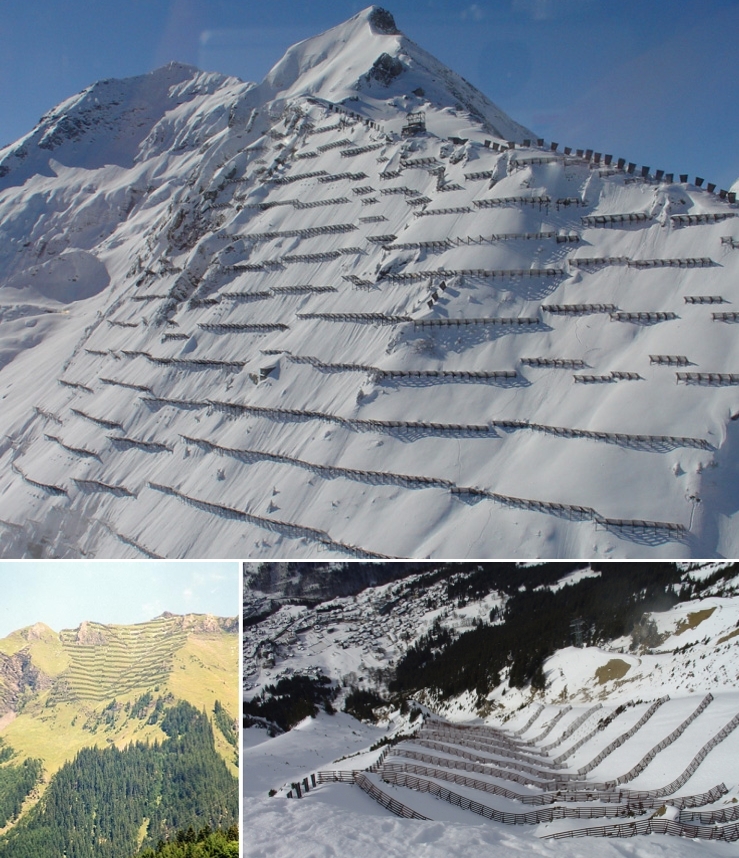man vs mountain: avalanche control structures
one of the places i'd refuse to set up home would have to be at the bottom of a mountain with a history of avalanche activity. unfortunately for some that choice doesn't seem to exist and after reading a post over at the highly recommended blog pruned yesterday the frightening world of avalanche survival systems nearly became an obsession, for a couple of reasons.
firstly, the fact that they exist at all was news to me. i naively assumed that avalanches of any substance were pretty much uncontrollable on our part (unless explosives are used), especially when the relatively miniscule and fragile community you're attempting to defend sits at the base of the mountain in question. so the thought of humans battling angry mountains the world over using fences and angled walls was always going to be a winner for me. secondly, they look great. i'm a sucker for enormous man-made structures anyway and these beasts are fairly huge, the dams especially as they sometimes span the width of entire villages.
so, here a 3 different types of structure actively being used in various regions in the defense against rapid walls of snow. i'm not even going to pretend to be knowledgeable about the subject so if you want any more depth i suggest you follow the links after these photos.
the deflecting dam

deflecting dams exist with one objective in mind: to divert the flow of an oncoming avalanche away from the populated area beneath the shifting snow. this is done using angled walls and one of the most successful examples can be found at flateyri in iceland (see above) where a triangular deflecting dam can be clearly seen above the village. the dam was built following a fatal avalanche in 1995 and since its construction the dam has successfully diverted at least 2 more large avalanches.
the catching dam

in areas where a diversion isn't possible you will often find a catching dam, a structure built purely to stop an avalanche in its tracks, hopefully preventing any major movement beyond that point. the main part of a catching dam is the long, curved wall immediately above the community. further up you'll sometimes find a series of huge earth mounds, strategically placed in order to suck some energy from the flow before it hits the main wall and renders it useless. the photos above show the catching dam protecting drangagil, also in iceland.
below is video of a simulation of the taconnaz catching dam in action, the yellow areas being the part of the flow with highest energy…
supporting structures

steel supporting structures are the most common type of avalanche control system and can be found at the top of avalanche-prone mountains. huge horizontal lines of (usually) steel angled supports are built into the side of avalanche starting zones for a number of reasons: 1. to give support to the snow, therefore reducing the likelihood of an avalanche in the first place, 2. to remove the momentum of any small avalanches, 3. to prevent 'slab formation' by divding the snow into sections.
for more info, check out the source links below. you can also go here to read parts of the extremely interesting and useful (if you live or holiday amongst unstable mountains) 'avalanche handbook' - not all of it is readable through google books but it can be bought through amazon here.
No comments:
Post a Comment